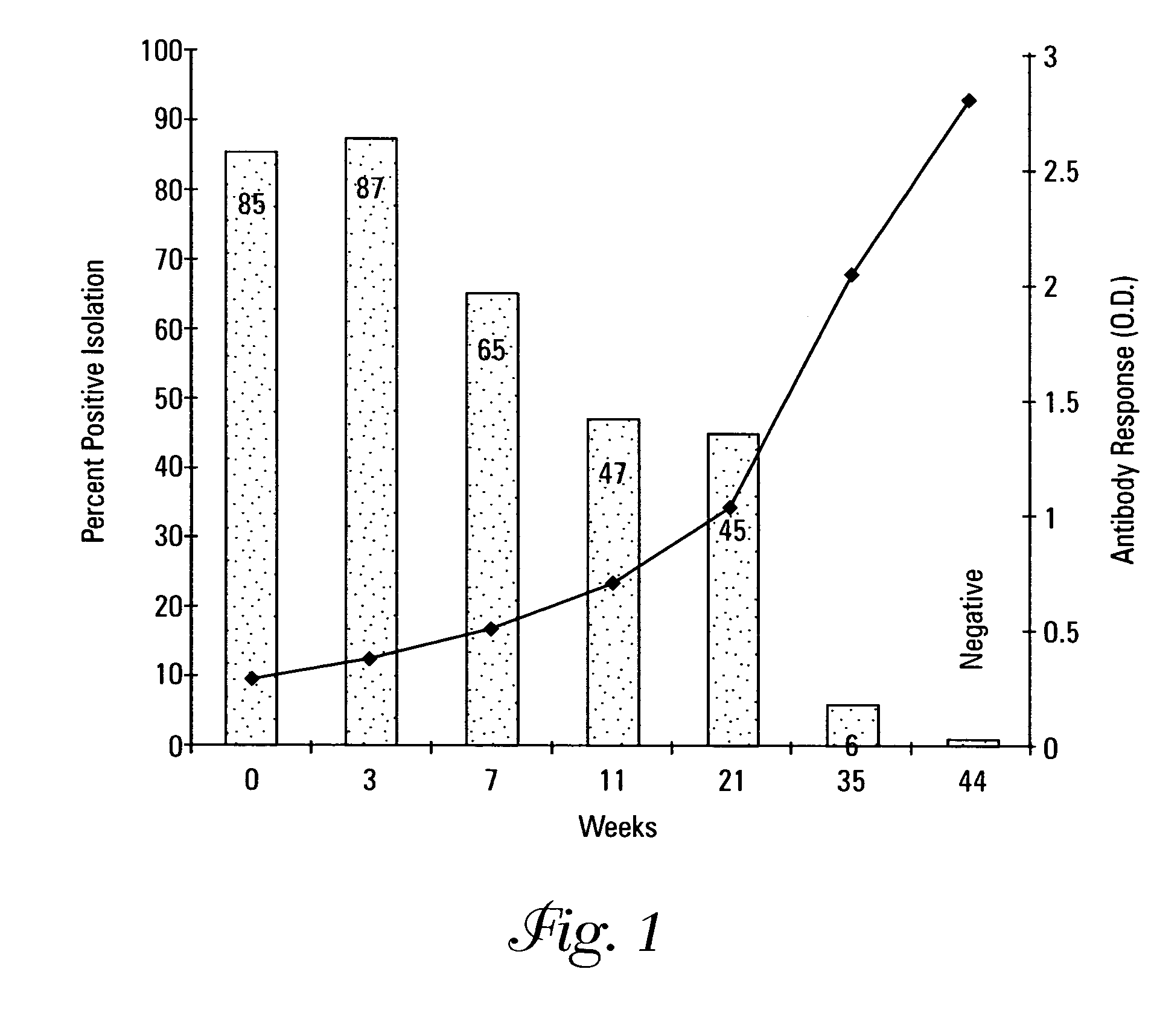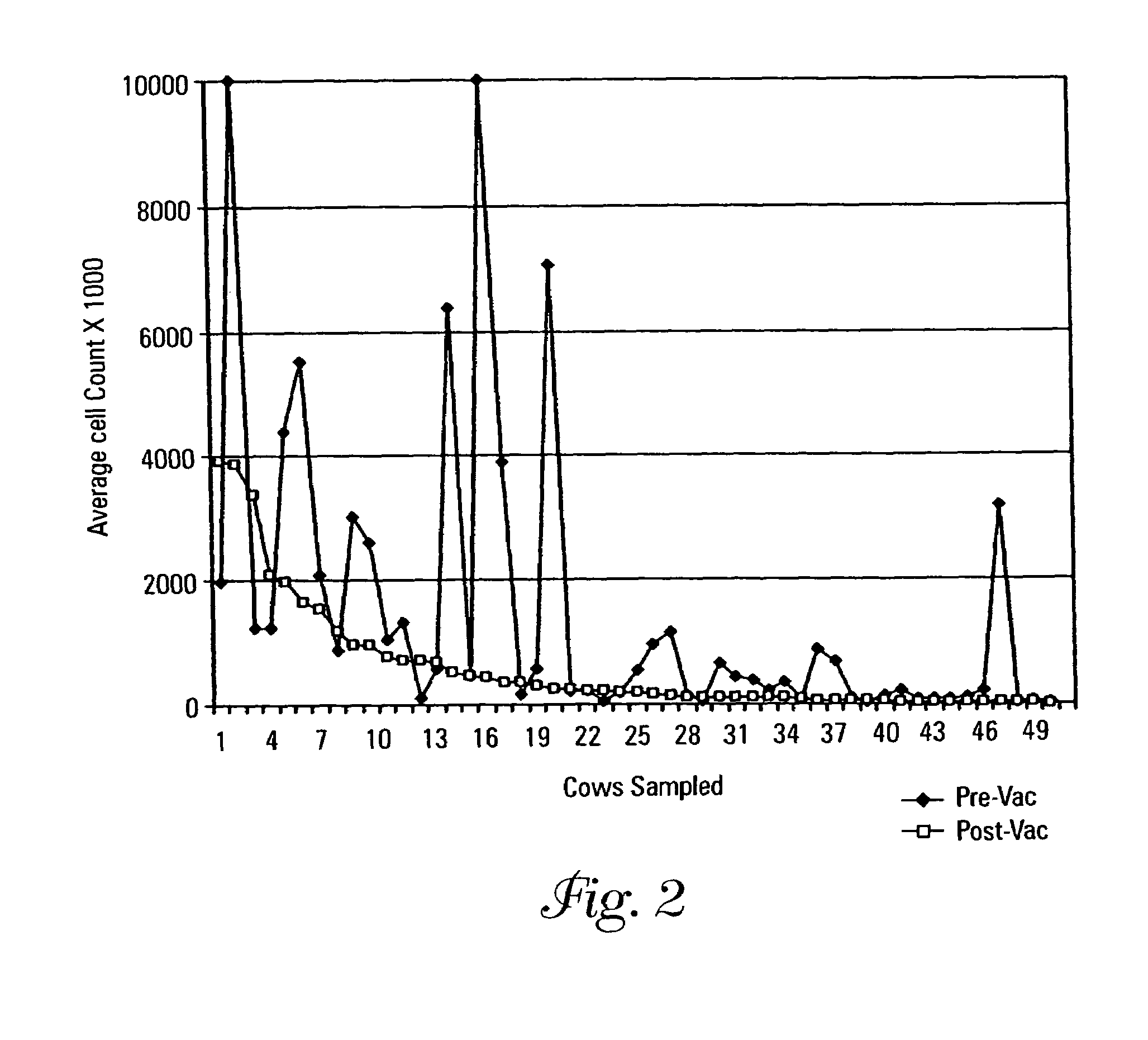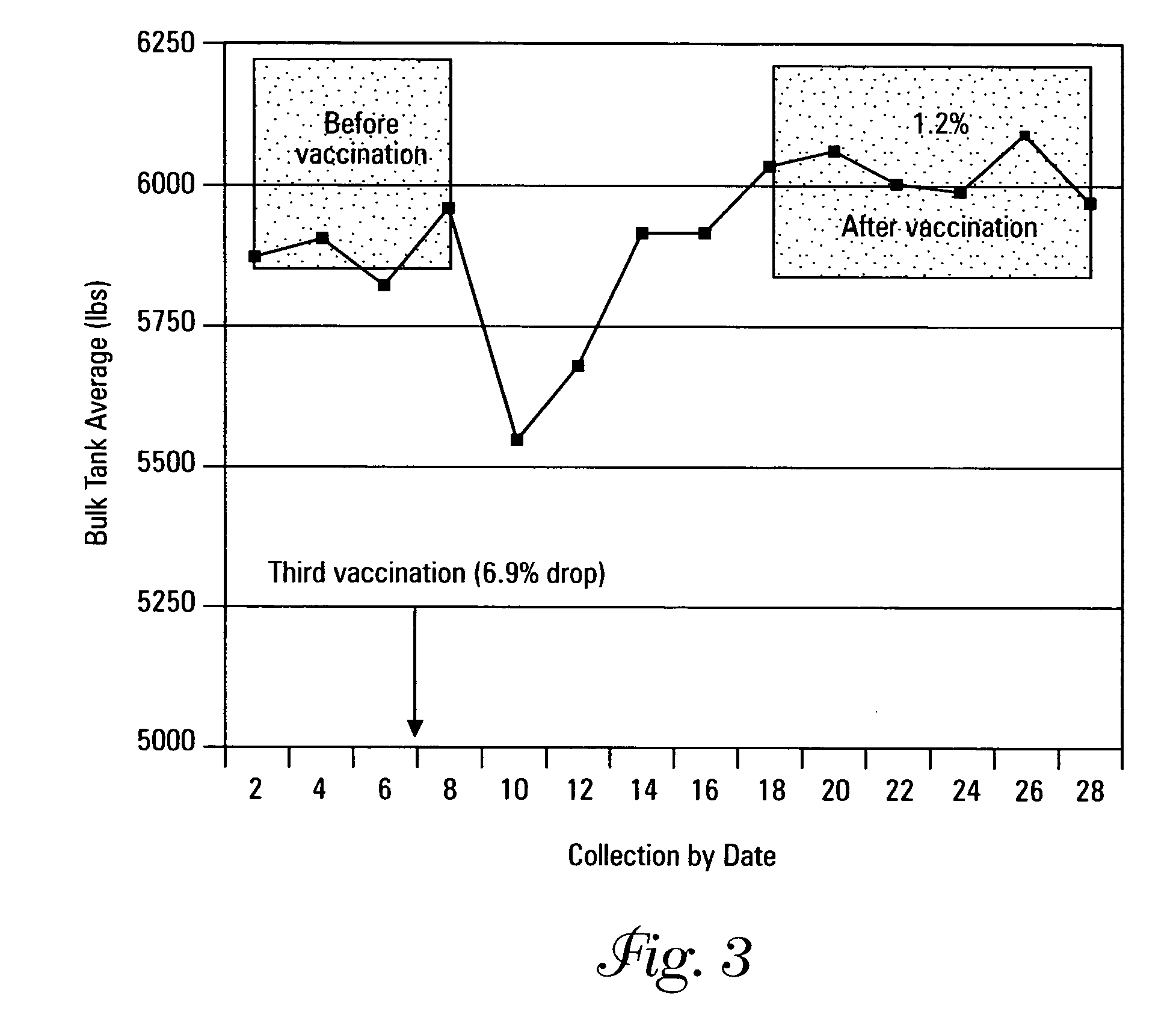Methods for treating an animal for low milk production
a low-milk production, animal technology, applied in the direction of antibody medical ingredients, immunological disorders, peptide/protein ingredients, etc., can solve the problems of long-standing but unresolved need for economic production methods, lps removal methods that cannot be used, and and achieve low milk production. , the effect of low somatic cell coun
- Summary
- Abstract
- Description
- Claims
- Application Information
AI Technical Summary
Benefits of technology
Problems solved by technology
Method used
Image
Examples
example 1
Production and Isolation of Siderophore Receptor Proteins and Porins
[0075]Gram negative bacteria belonging to the families Enterobacteriaceae and Pseudomonadaceae, as well as other gram negative bacteria can be grown under controlled fermentation conditions so as to express siderophore receptor proteins and porins, and optionally, iron regulated proteins, on the outer membrane. The bacteria can be harvested by conventional methods and the outer membrane proteins can then be isolated and used as immunogens in a vaccine composition described in detail in the following example.
[0076]Salmonella dublin was isolated from Holstein steers in a commercial feed lot showing clinical signs of Salmonellosis, and designated MS010207. The isolate was serotyped by the Minnesota Poultry Testing Laboratory, (Willmar, Minn.). A master seed stock of the organism was prepared by inoculating 100 ml of Tryptic Soy Broth (Difco Laboratories, Detroit, Mich.) containing 50 micrograms per milliliter (μg / ml) o...
example 2
Mouse Vaccination and Challenge Study
[0085]The efficacy of a Salmonella dublin vaccine consisting of Siderophore receptor proteins (SRPs) and porins was carried out against a live virulent challenge in mice as described under 9 CFR 113.123. Sixty female CF-1 mice obtained from Harlan Breeding Laboratories (Indianapolis, Ind.) weighing 16–22 grams were equally distributed into 6 polycarbonate mouse cages (Ancore Corporation, Bellmore, N.Y.) designated as groups 1–6.
[0086]The composition including siderophore receptor proteins and porins was prepared as described in Example 1 from a bovine field isolate of Salmonella dublin originating from a herd of Holstein Dairy cows showing clinical symptoms of Salmonellosis.
[0087]The SRPs had molecular weights of 89 kDa, 84 kDa, 72 kDa and porins had molecular weights of 38–39 kDa as examined on a 12% SDS-Page gel. The SRPs and porins in 8.3 ml (6,035 μg / ml) were resuspended into 69.2 ml physiological saline (0.85%). The aqueous protein suspensio...
example 3
Preparation of an Immunizing Composition Derived from Salmonella bredeney
[0092]Salmonella bredeney was isolated and serotyped from a Minnesota dairy herd having a history of high adult and calf mortality, morbidity and loss of production due to this bacterial strain, and designated MS010914. SRPs and porins were isolated as described in Example 1. Three high molecular weight SRPs, 89 kDa, 84 kDa, and 72 kDa, were observed on a 12% sodium dodecyl sulfate polyacrylamide gel electrophoresis (SDS-Page) gel. Three additional lower molecular weight iron-regulated proteins (IRPs) were also isolated at approximately the 37 kDa, 32 kDa and 29 kDa regions. Porins having a molecular weight in the range of 38–39 kDa were also purified from the propagated isolates.
[0093]Two compositions were prepared from the SRPs having molecular weights of 89 kDa, 84 kDa, and 72 kDa, the IRPs having molecular weights of 37 kDa, 32 kDa, and 29 kDa, and porins having molecular weights of 38–39 kDa. The target p...
PUM
| Property | Measurement | Unit |
|---|---|---|
| molecular weights | aaaaa | aaaaa |
| molecular weights | aaaaa | aaaaa |
| molecular weights | aaaaa | aaaaa |
Abstract
Description
Claims
Application Information
 Login to View More
Login to View More - R&D
- Intellectual Property
- Life Sciences
- Materials
- Tech Scout
- Unparalleled Data Quality
- Higher Quality Content
- 60% Fewer Hallucinations
Browse by: Latest US Patents, China's latest patents, Technical Efficacy Thesaurus, Application Domain, Technology Topic, Popular Technical Reports.
© 2025 PatSnap. All rights reserved.Legal|Privacy policy|Modern Slavery Act Transparency Statement|Sitemap|About US| Contact US: help@patsnap.com



